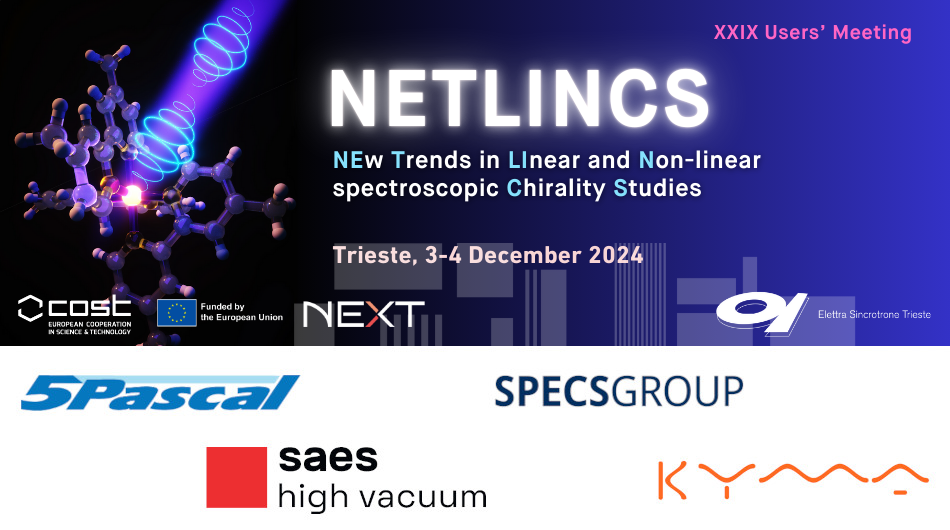Speaker
Description
Within a bottom/up approach of molecular complexity, the study of isolated, substrate- and solvent-free chiral species is crucial, but classical chiroptical probes such as Circular Dichroism (CD) in absorption are poorly adapted to dilute matter because of their very weak associated asymmetries.
At the opposite, two decades ago was introduced a new chiroptical effect called Photoelectron Circular Dichroism (PECD), allowed in the electric dipole approximation, leading to very intense (up to 40 %) forward/backward asymmetries, with respect to the photon axis, in the angular distribution of photoelectrons produced by circularly polarized light ionization of gas phase pure enantiomers. PECD happens to be a universal, orbital-specific, photon energy dependent chiroptical effect and is a subtle probe of the molecular potential, on which the photoelectron is scattered off, being very sensitive to static molecular structures such as conformers, isomers, clusters, as well as to vibrational motion, much more so than other observables in photoionization such as the cross section (Photoelectron Spectrum-PES) or the usual (achiral) asymmetry parameter (for a review see [1]). Therefore, PECD studies have a dual fundamental and analytical interest. This last aspect is probably the driving force for the recent extension and blooming of PECD studies, beyond the pioneering synchrotron radiation works, towards the laser (and now FEL) community.
After a broad introduction to PECD, several recent results regarding static one VUV-photon valence-shell PECD will be presented, including a striking example of the specific sensitivity of PECD to conformations [2] as well as a first evidence of induced-PECD onto an achiral chromophore within a molecular complex [3]. Then the demonstration of conformer-specific PECD via two-photon ns-laser ionization will be highlighted [4].
The conclusion will stress the universality of PECD, which may be at play in numerous environments including the interstellar medium where it has been suggested as a possible symmetry-breaking process in link with the origin of life’s homochirality [5].
[1] L. Nahon, G. A. Garcia, and I. Powis, J. Elec. Spectr. Relat. Phen. 204, 322 (2015).
[2] J. Dupont, V. Lepere, A. Zehnacker, S. Hartweg, G. A. Garcia and L. Nahon, J. Phys. Chem. Lett. 13, 2313 (2022).
[3] E. Rouquet, M. Roy Chowdhury, G. A. Garcia, L. Nahon, J. Dupont, V. Lepère, K. Le Barbu-Debus,and A. Zehnacker, Nature Communications 14, 6290 (2023).
[4] E. Rouquet, J. Dupont, V. Lepere, G. A. Garcia, L. Nahon, and A. Zehnacker, Angew. Chem. Int. Ed. Engl., e202401423 (2024).
[5] R. Hadidi, D. Bozanic, G. Garcia, and L. Nahon, Adv. Phys. X 3, 1477530 (2018).

